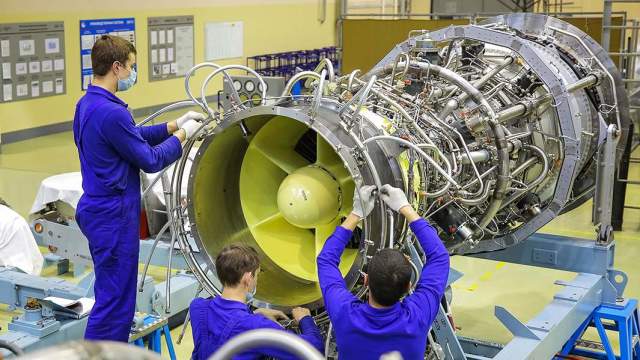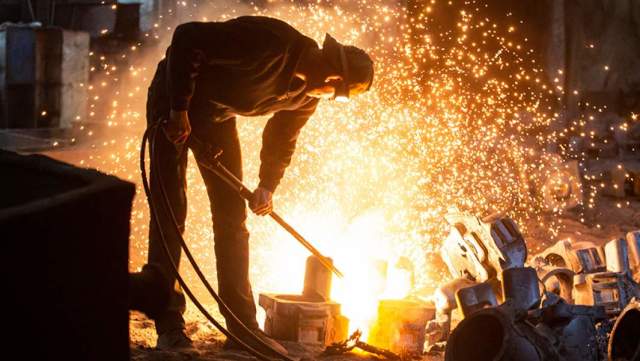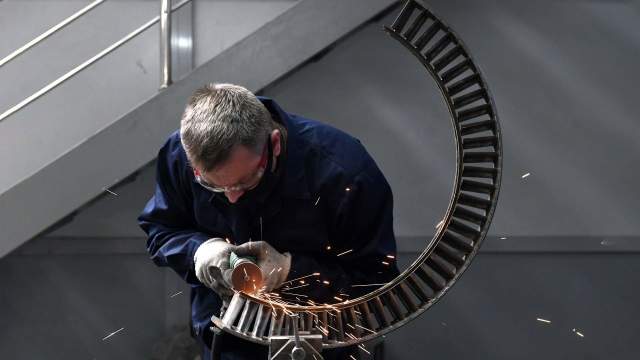How it can be used in the aviation and space industry
Materials scientists have proposed a way to improve the mechanical properties of an alloy consisting of aluminum, niobium, titanium and vanadium through simple processing. The authors found that rolling and subsequent short high-temperature annealing ensures the formation of a fine-grained structure, which makes it super-strong and the most plastic today among such alloys. The improved material can be used in the aviation and space industry, the developers are sure.
Ultra-high requirements
The aviation and space industries place increased demands on materials: they must be strong, light, withstand enormous loads and temperature changes. For example, in the manufacture of gas turbine engines, titanium and nickel superalloys are used, the properties of which can no longer be significantly improved. In this regard, materials scientists all over the world are actively researching high- and medium-entropy alloys consisting of several (usually at least four to five) refractory metals that demonstrate a unique set of properties at extremely high temperatures.
The potential replacement of currently used high-temperature materials with refractory high/medium-entropy alloys can help to produce and use aircraft more efficiently and reduce harmful emissions. However, they are quite fragile at room temperature. The point is in their structure, where metal atoms are arranged in a strictly defined way and are not plastic enough. Meanwhile, there are some compositions of refractory high/medium entropy alloys with an ordered structure that can be ductile at room temperature. They consist of so-called grains and ordered regions inside them (they are called domains).

Photo: RIA Novosti/Nina Padalko
Image source: iz.ru
Materials scientists from Belgorod State National Research University and St. Petersburg State Marine Technical University investigated the mechanical properties of a previously proposed refractory medium-entropy alloy of aluminum, niobium, titanium and vanadium with an ordered structure. To conduct systematic studies, scientists varied the grain sizes and domains by changing the processing conditions, namely the temperature and duration of annealing after cold rolling.
— Taking into account the enormous interest of the world materials science community in such materials, which are considered as the most promising replacement for existing heat—resistant alloys, the results obtained by us can create the basis for the development of new practically significant compositions with unique mechanical properties that can significantly increase the range of aircraft flights and reduce the amount of harmful emissions, - the project manager told Izvestia, supported by a grant from the Russian Academy of Sciences, Candidate of Technical Sciences, researcher at the National Research University "BelSU" Nikita Yurchenko.
Secret materials

Photo: TASS/Alexander River
Image source: iz.ru
The results showed that, regardless of the size of the domains, grain grinding allowed to increase the extensibility of the material by about 50% at room temperature. According to this indicator, the alloy surpasses all currently known refractory high/medium entropy. The authors of the study suggest that the material presented by them, with the achievement of increased plasticity due to relatively simple processing, may be promising for structural applications in the aviation and space industries.
At the moment, such alloys are considered promising structural and functional materials due to the complex of high physical and mechanical properties, said Dmitry Moskovskikh, director of the Research Center "Structural Ceramic Materials" of NUST MISIS.
— Control of the structure by means of various types of plastic deformation followed by annealing makes it possible to obtain the desired combination of strength and plasticity. Consequently, the presented results are really relevant both from a practical point of view and from the point of view of new knowledge in the field of materials science of medium- and high-entropy deformable alloys," he stressed.
This and other similar studies make a significant contribution to the development of heat-resistant materials, which will eventually lead to the replacement of the currently existing best nickel heat-resistant superalloys and will allow us to step forward in terms of the development of the aerospace industry, the expert summed up.

Photo: RIA Novosti/Roscosmos press service
Image source: iz.ru
However, a number of experts believe that the new alloys will not necessarily revolutionize their manufacture.
— The topic itself is fashionable, popular, of interest to the materials science scientific community, — says Nikolai Kolbasnikov, Professor of the Higher School of Physics and Technology of Materials at Peter the Great SPbPU. — It can be said, obviously, that this topic represents another scientific boom (rather, a microboom) of those that this science experiences from time to time. The last one, which has not brought the expected results in structural materials science, is nanomaterials.
The research was supported by a grant from the Russian Science Foundation (RNF) and published in the journal Materials Science and Engineering.
Maria Nedyuk

